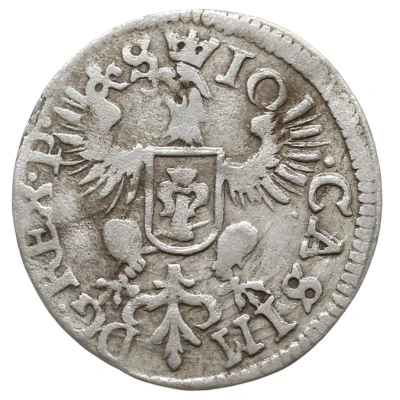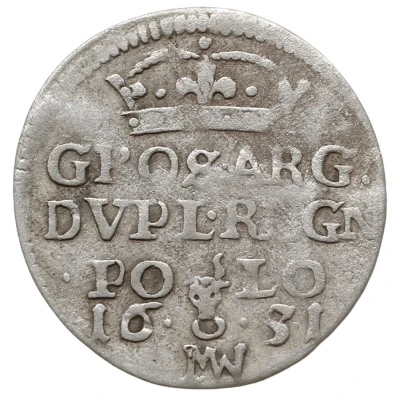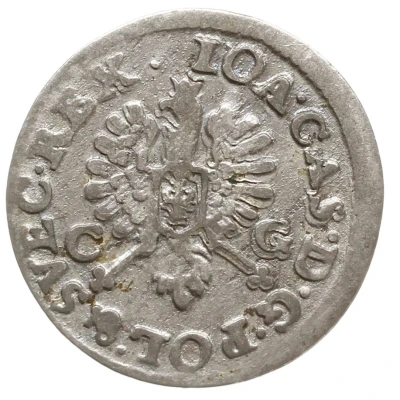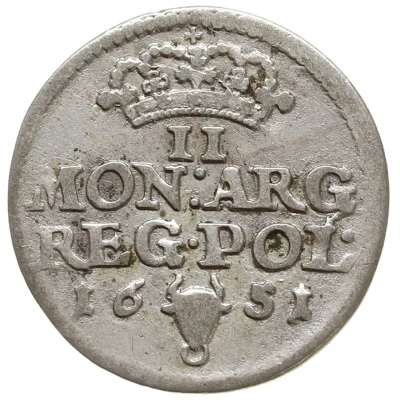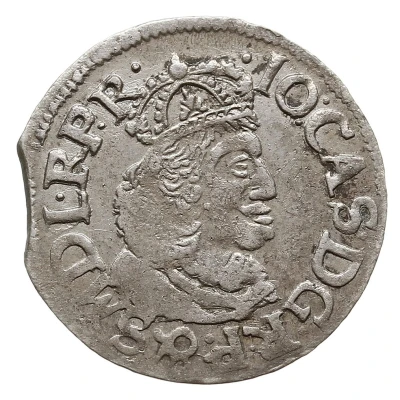
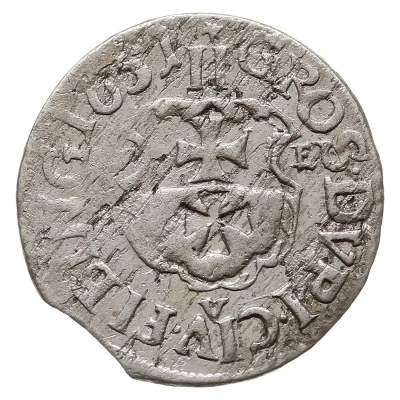

© Warszawskie Centrum Numizmatyczne s.j.
Dwugrosz elbląski - Jan II Kazimierz Waza Elbląg
1651 year| Silver | - | - |
| Issuer | Polish–Lithuanian Commonwealth |
|---|---|
| King | John II Casimir Vasa (1649-1668) |
| Type | Standard circulation coin |
| Year | 1651 |
| Value | 2 Groschens (Dwugrosz) (1⁄15) |
| Currency | First Zloty (1573-1795) |
| Composition | Silver |
| Shape | Round |
| Demonetized | Yes |
| Updated | 2024-10-07 |
| Numista | N#96872 |
|---|---|
| Rarity index | 100% |
Reverse
Script: Latin
Comment
Mint: Elbląg - Elbinga - Elbingus - Elbing - エルブロンク - Elbings - Jelbiąg - Elbiąg - البلنغ - Эльблонг - 埃爾布隆格Kopicki 7111
Punch 1: RPR
Pictures: © WCN
Punch 2: RPV
Pictures: © WCN
Punch 3: RPR
Pictures: © WCN
Kopicki 7112
Pictures: © GNDM
Interesting fact
The Dwugrosz elbląski coin featuring Jan II Kazimierz Waza (Elbląg) 1651 from the Polish–Lithuanian Commonwealth was made of silver, but it was also one of the first coins in Europe to use a new technology called "milled" or "reeded" edges. This technology involved grooving the edges of the coin with a special tool to create a textured, ribbed effect. This innovation made it more difficult for counterfeiters to produce fake coins, as it was harder to replicate the milled edges. This coin's unique design and security feature made it a pioneering example of advanced coinage technology in Europe during that time.
